Sidedraws and Side Reboilers
Cory Hendrick
Feb 2, 2007
ProMax gives its users great flexibility when designing complex towers with sidedraws and side reboilers. There are several ways to represent side draws and the user should understand the differences within the options given in ProMax.
The simplest sidedraw is one where all of the liquid leaving a given stage is drawn off, heated and returned to the stage below. Likewise, the simplest method for modeling this type of draw is to simply connect an energy stream (whether by itself, or connected to a heat exchanger) to the stage where the heated fluid would be returned if it had been drawn off.
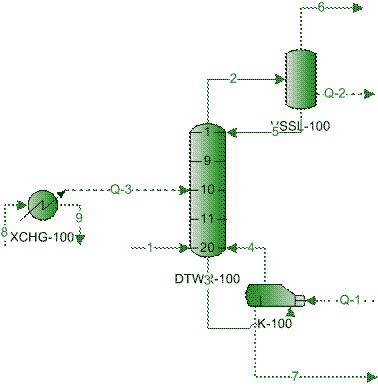
FLOW SCHEME 1
In the above flow scheme, all of the liquid leaving stage 9 is being heated before reaching stage 10.
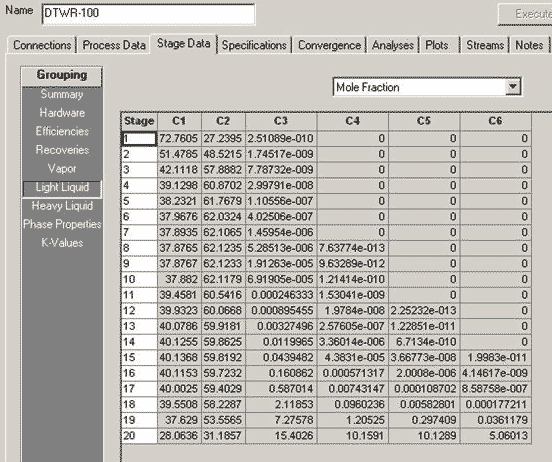
TABLE 1: LIQUID COMPOSITION PROFILE FOR FLOW SCHEME 1
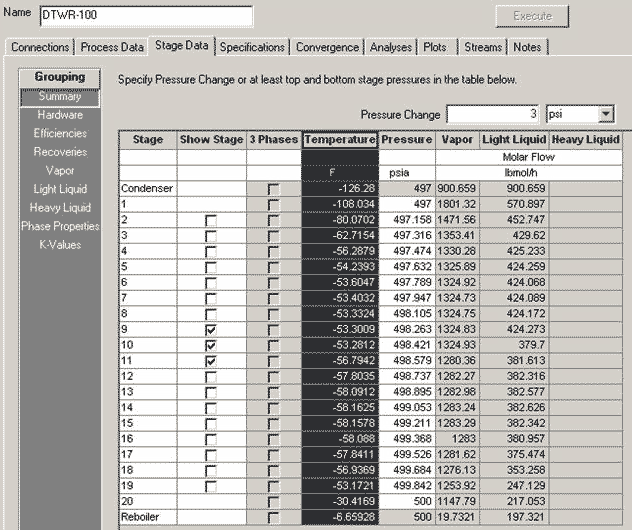
TABLE 2: TEMPERATURE PROFILE FOR FLOW SCHEME 1
The above tables (TABLE 1 and TABLE 2) show the temperature profile and compositions profile for the column stages of FLOW SCHEME 1..
The other option for this type of side draw is to attach a stream leaving a particular stage, have it pass through a heat exchanger, and return it to the same stage.
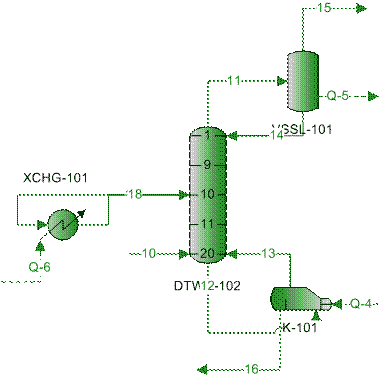
FLOW SCHEME 2
Just as in the previous flow scheme, all of the liquid leaving stage 9 is being drawn off, heated and returned to stage 10 for interaction.
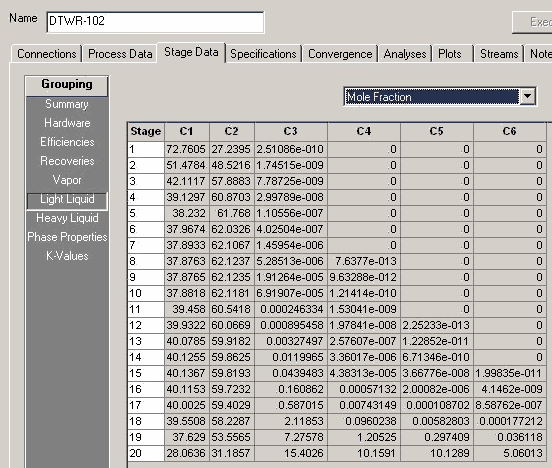
TABLE 3: LIQUID COMPOSITION PROFILE FOR FLOW SCHEME 2
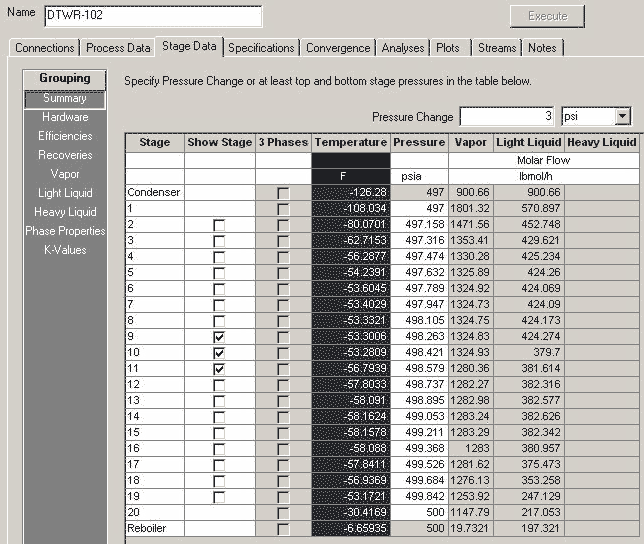
TABLE 4: TEMPERATURE PROFILE FOR FLOW SCHEME 2
Notice the composition and temperature profiles in the above two tables match the first configuration.
Of course, there are other options when drawing off streams and reconnecting them depending on what the user would like to show. For instance, if you would rather pull the liquid off of any given stage and return it to another, you simply have to connect the streams accordingly.
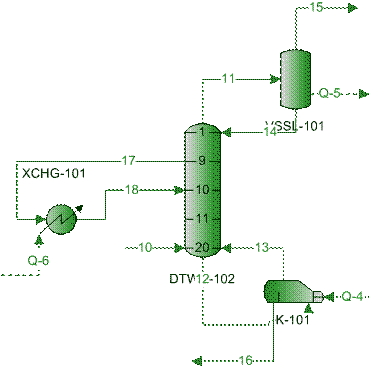
FLOW SCHEME 3
In the above case, we are drawing the liquid before it interacts with the vapor on stage 9 and returning it to stage 10 for interaction with the vapor. Therefore, stage 9 has virtually no liquid traffic. Likewise, it will produce different results than FLOW SCHEME 1 and 2.
It is important to understand how to have a simulator reflect the process scheme being considered. ProMax gives great flexibility when setting up complex columns to better match the actual design conditions.
Authored by Cory Hendrick - BR&E Sales Department